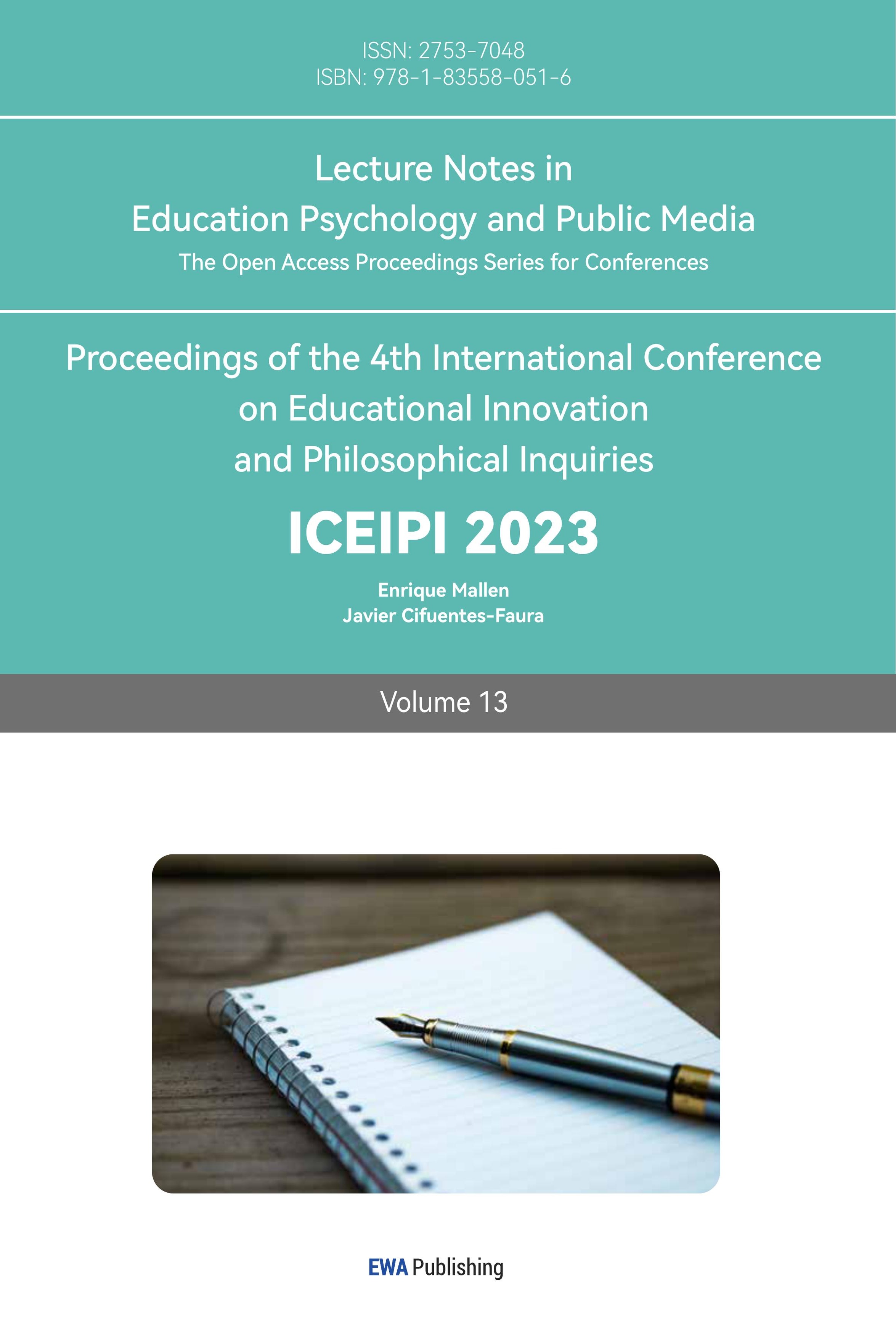References
[1]. Sullivan, J. (2013). Uses and Gratifications. In Media Audiences: Effects, Users, Institutions and Power (pp. 107-132). Thousand Oaks, California: Sage.
[2]. Yilmaz, M., Yilmaz, U., & Demir-Yilmaz, E. N. (2019). The Relation between Social Learning and Visual Culture. International Electronic Journal of Elementary Education, 11(4), 421–427.
[3]. Shen, J. (2022). A Study of Visual Culture in New Age Film and TV Works from Women’s Perspective. Movie Literature, (2), 92-95.
[4]. Feng, L. (2020). Huace Film and Television: New Opportunities for Film and Television in the Era of Digital Economy. Zheshang Magazine, (19), 52-53.
[5]. Appel, M., & Gnambs, T. (2022). Women in fiction: Bechdel-Wallace Test results for the highest-grossing movies of the last four decades. Psychology of Popular Media.
[6]. Megan, S. (2023). “Make your feed work for you”: Tactics of feminist affective resistance on social media. Computers and Composition, 67(13), 1-16. Retrieved from Business Source Complete, ScienceDirect. Retrieved from www.sciencedirect.com
[7]. Kelly, D. M., Pomerantz, S., & Currie, D. H. (2006). ‘No Boundaries’? Girls’ Interactive, Online Learning About Femininities. Youth & Society, 38(1), 3–28.
[8]. Meißner, N. (2015). Opinion leaders as intermediaries in audience building for independent films in the Internet age. Convergence: The Journal of Research into New Media Technologies, 21(4), 450–473.
[9]. Chen, Y. (2022). Domestic female films: the right to “return” and “leave”. Movie Literature, (21), 58-61.
[10]. Li Li, Yea-Wen Chen, & Nakazawa, M. (2013). Voices of Chinese Web-TV Audiences: A Case of Applying Uses and Gratifications Theory to Examine Popularity of Prison Break in China. China Media Research, 9(1), 63–74.
[11]. Lin, J. (2019). The New Female Gaze in Domestic IP Films from a Post-Emotional Perspective. Movie Literature, (11), 65-68.
Cite this article
Xiong,X. (2023). Chinese Online Audience’s Aesthetics Change on Female Characters in Media Products from 2018 to 2023. Lecture Notes in Education Psychology and Public Media,13,91-98.
Data availability
The datasets used and/or analyzed during the current study will be available from the authors upon reasonable request.
Disclaimer/Publisher's Note
The statements, opinions and data contained in all publications are solely those of the individual author(s) and contributor(s) and not of EWA Publishing and/or the editor(s). EWA Publishing and/or the editor(s) disclaim responsibility for any injury to people or property resulting from any ideas, methods, instructions or products referred to in the content.
About volume
Volume title: Proceedings of the 4th International Conference on Educational Innovation and Philosophical Inquiries
© 2024 by the author(s). Licensee EWA Publishing, Oxford, UK. This article is an open access article distributed under the terms and
conditions of the Creative Commons Attribution (CC BY) license. Authors who
publish this series agree to the following terms:
1. Authors retain copyright and grant the series right of first publication with the work simultaneously licensed under a Creative Commons
Attribution License that allows others to share the work with an acknowledgment of the work's authorship and initial publication in this
series.
2. Authors are able to enter into separate, additional contractual arrangements for the non-exclusive distribution of the series's published
version of the work (e.g., post it to an institutional repository or publish it in a book), with an acknowledgment of its initial
publication in this series.
3. Authors are permitted and encouraged to post their work online (e.g., in institutional repositories or on their website) prior to and
during the submission process, as it can lead to productive exchanges, as well as earlier and greater citation of published work (See
Open access policy for details).
References
[1]. Sullivan, J. (2013). Uses and Gratifications. In Media Audiences: Effects, Users, Institutions and Power (pp. 107-132). Thousand Oaks, California: Sage.
[2]. Yilmaz, M., Yilmaz, U., & Demir-Yilmaz, E. N. (2019). The Relation between Social Learning and Visual Culture. International Electronic Journal of Elementary Education, 11(4), 421–427.
[3]. Shen, J. (2022). A Study of Visual Culture in New Age Film and TV Works from Women’s Perspective. Movie Literature, (2), 92-95.
[4]. Feng, L. (2020). Huace Film and Television: New Opportunities for Film and Television in the Era of Digital Economy. Zheshang Magazine, (19), 52-53.
[5]. Appel, M., & Gnambs, T. (2022). Women in fiction: Bechdel-Wallace Test results for the highest-grossing movies of the last four decades. Psychology of Popular Media.
[6]. Megan, S. (2023). “Make your feed work for you”: Tactics of feminist affective resistance on social media. Computers and Composition, 67(13), 1-16. Retrieved from Business Source Complete, ScienceDirect. Retrieved from www.sciencedirect.com
[7]. Kelly, D. M., Pomerantz, S., & Currie, D. H. (2006). ‘No Boundaries’? Girls’ Interactive, Online Learning About Femininities. Youth & Society, 38(1), 3–28.
[8]. Meißner, N. (2015). Opinion leaders as intermediaries in audience building for independent films in the Internet age. Convergence: The Journal of Research into New Media Technologies, 21(4), 450–473.
[9]. Chen, Y. (2022). Domestic female films: the right to “return” and “leave”. Movie Literature, (21), 58-61.
[10]. Li Li, Yea-Wen Chen, & Nakazawa, M. (2013). Voices of Chinese Web-TV Audiences: A Case of Applying Uses and Gratifications Theory to Examine Popularity of Prison Break in China. China Media Research, 9(1), 63–74.
[11]. Lin, J. (2019). The New Female Gaze in Domestic IP Films from a Post-Emotional Perspective. Movie Literature, (11), 65-68.









